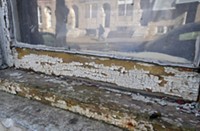Advertisement
Grab your lab coat. Let's get started
Welcome!
Welcome!
Create an account below to get 6 C&EN articles per month, receive newsletters and more - all free.
It seems this is your first time logging in online. Please enter the following information to continue.
As an ACS member you automatically get access to this site. All we need is few more details to create your reading experience.
Not you? Sign in with a different account.
Not you? Sign in with a different account.
ERROR 1
ERROR 1
ERROR 2
ERROR 2
ERROR 2
ERROR 2
ERROR 2
Password and Confirm password must match.
If you have an ACS member number, please enter it here so we can link this account to your membership. (optional)
ERROR 2
ACS values your privacy. By submitting your information, you are gaining access to C&EN and subscribing to our weekly newsletter. We use the information you provide to make your reading experience better, and we will never sell your data to third party members.
Environment
Formaldehyde Limits Set
FEMA acts to reduce formaldehyde levels in trailers for disaster victims
by Glenn Hess
April 16, 2008
The Federal Emergency Management Agency is setting strict new limits on formaldehyde levels in the temporary housing units it buys for disaster victims.
Each unit purchased in the future must test below 0.016 ppm, which means the concentration of formaldehyde in the indoor air will be comparable to the levels typically found in conventional U.S. homes.
Testing this year has shown that formaldehyde levels, on average, are about five times higher in existing FEMA units than in most modern homes. FEMA says the new procurement specifications will take effect with 1,400 mobile homes and 1,900 park-model trailers that it plans to buy over the next three years for use in future disasters. Some are expected to be available for this year's hurricane season.
FEMA says the manufactured housing industry can reduce formaldehyde emissions by removing certain fibers, insulation, and other components that release elevated levels of the chemical. "There is no national standard for formaldehyde levels in American homes," FEMA Administrator R. David Paulison says. "Until there is a consensus standard, we will take extraordinary precautions."
Formaldehyde is a preservative commonly used in construction materials. Prolonged exposure can lead to respiratory and other serious health problems.





Join the conversation
Contact the reporter
Submit a Letter to the Editor for publication
Engage with us on Twitter